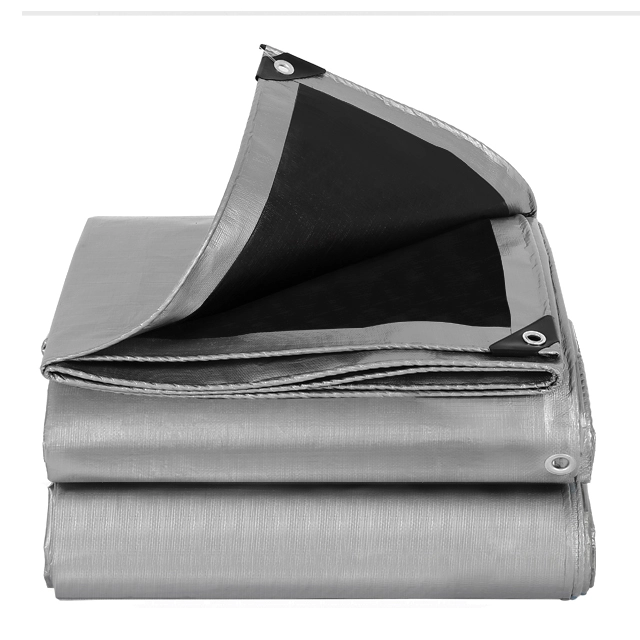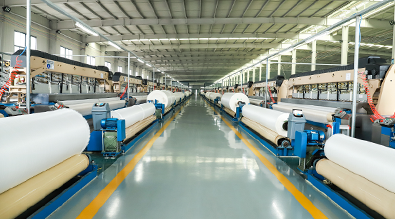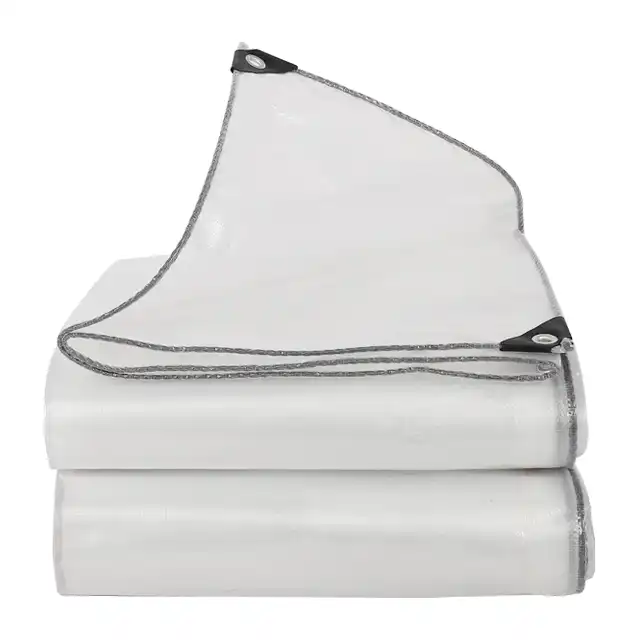UV-Treated Tarpaulins: Durability and Usage Tips
Imagine watching your expensive outdoor equipment deteriorate under the scorching sun, or discovering that your cargo protection has failed during critical transportation because you chose an inadequate tarp without proper UV treatment. This comprehensive guide reveals essential durability secrets and professional usage strategies for UV tarpaulin applications that can save you thousands in replacement costs while ensuring reliable long-term protection for your valuable assets.
Understanding UV Treatment in Tarpaulins

UV treatment represents a critical manufacturing process that transforms ordinary polyethylene materials into durable protective solutions capable of withstanding prolonged sun exposure. When manufacturers apply UV stabilizers and inhibitors during production, they create a molecular barrier that prevents ultraviolet radiation from breaking down the polymer chains within the tarpaulin structure. This UV tarpaulin technology significantly extends service life compared to untreated alternatives, making it essential for outdoor applications ranging from cargo transportation to agricultural protection. The science behind UV treatment involves incorporating specialized additives such as titanium dioxide, carbon black, and organic UV absorbers into the base material during the extrusion process. These compounds work synergistically to absorb, reflect, and dissipate harmful UV energy before it can cause photodegradation of the underlying polymer matrix. Professional-grade UV tarpaulin products typically undergo rigorous testing to ensure consistent protection levels across the entire surface area.
-
UV Degradation Process and Prevention
Ultraviolet radiation attacks polymer chains through a process called photodegradation, where UV energy breaks molecular bonds and causes material brittleness, color fading, and eventual structural failure. Without proper UV treatment, standard polyethylene tarpaulins may begin showing deterioration signs within months of outdoor exposure, developing cracks, tears, and significant strength reduction. Advanced UV tarpaulin formulations address this challenge through multiple protection mechanisms. Light stabilizers absorb UV energy and convert it to harmless heat, while antioxidants prevent secondary degradation reactions. This multi-layered approach ensures that high-quality UV tarpaulin products maintain their protective properties for extended periods, often lasting 5-7 years under normal outdoor conditions compared to 1-2 years for untreated materials.
Material Science Behind UV Tarpaulin Durability
The durability of UV tarpaulin products depends fundamentally on material composition, manufacturing processes, and quality control standards implemented during production. High-density polyethylene forms the backbone of premium tarpaulin construction, providing inherent strength, flexibility, and chemical resistance that makes it ideal for demanding outdoor applications. Manufacturing excellence involves precise control of yarn extrusion parameters, weaving tension, and coating application to ensure uniform UV tarpaulin properties throughout the finished product. Professional manufacturers employ specialized equipment including high-tech extruding machines capable of producing yarns ranging from 400D to 2500D denier, allowing customization based on specific application requirements and expected service conditions.
-
Advanced Coating Technologies
Modern UV tarpaulin production utilizes sophisticated coating systems that apply multiple layers of protective materials to enhance durability and performance characteristics. LDPE lamination processes create waterproof barriers while maintaining material flexibility, and specialized heat-sealing techniques ensure leak-proof seam construction that withstands repeated stress cycles. Quality control protocols include comprehensive testing of tensile strength, tear resistance, UV stability, and waterproof performance using standardized laboratory procedures. ISO 9001 certification requirements mandate systematic monitoring of all production processes, ensuring consistent UV tarpaulin quality that meets international performance standards. Third-party testing laboratories validate product specifications, providing independent verification of durability claims and performance characteristics.
Professional Usage Applications and Best Practices
Professional UV tarpaulin applications span diverse industries including transportation, construction, agriculture, and emergency response operations. Each application category presents unique challenges requiring specific material properties, installation techniques, and maintenance protocols to ensure optimal performance and service life. Transportation applications demand UV tarpaulin products capable of withstanding wind loads, abrasion resistance, and repeated folding cycles while maintaining waterproof integrity. Truck covers must resist tearing from sharp cargo edges and provide reliable protection during long-distance hauling operations where materials face continuous UV exposure and mechanical stress.
-
Industrial and Commercial Applications
Construction sites utilize UV tarpaulin systems for debris containment, equipment protection, and temporary weather barriers during building operations. These applications require materials with enhanced puncture resistance, flame retardant properties, and ability to withstand installation stress from grommets and fastening hardware. Agricultural applications present unique challenges including exposure to fertilizers, pesticides, and extreme weather conditions while requiring UV tarpaulin products that maintain flexibility in temperature variations. Greenhouse construction, pond linings, and crop protection systems demand specialized material formulations that resist chemical degradation while providing long-term UV stability. Marine and port operations represent particularly demanding environments where UV tarpaulin products face salt spray, high humidity, and intense solar radiation. Cargo storage covers and ship protection systems require materials with superior corrosion resistance and enhanced UV protection to ensure reliable performance in maritime conditions.
Maintenance and Care Strategies for Extended Life
Proper maintenance protocols significantly extend UV tarpaulin service life while ensuring consistent protective performance throughout the product lifecycle. Regular inspection schedules should identify potential issues including small tears, seam separation, and UV degradation signs before they compromise overall tarp integrity. Cleaning procedures involve gentle washing with mild soap solutions followed by thorough rinsing and complete drying before storage. Avoid harsh detergents, petroleum-based solvents, or abrasive cleaning methods that can damage UV protective coatings and reduce material durability. Professional cleaning maintains surface properties that contribute to UV tarpaulin longevity.
-
Storage and Handling Guidelines
Correct storage practices prevent premature aging and maintain UV tarpaulin flexibility during periods of non-use. Clean, dry materials should be folded neatly without sharp creases and stored in climate-controlled environments away from direct sunlight, extreme temperatures, and chemical exposure that can accelerate degradation processes. Handling procedures during installation and removal should minimize stress concentrations that can initiate tear propagation. Use proper lifting techniques, avoid dragging across abrasive surfaces, and ensure adequate personnel for large tarpaulin deployment to prevent overloading individual attachment points and seam areas. Regular maintenance inspections should document tarp condition, identify repair needs, and track performance history to optimize replacement scheduling. Proactive maintenance programs reduce total cost of ownership while ensuring reliable protection for valuable equipment and materials covered by UV tarpaulin systems.
Quality Standards and Performance Specifications
Industry-leading UV tarpaulin manufacturers implement comprehensive quality management systems that ensure consistent product performance and reliability across all production batches. ISO 9001:2015 certification provides framework for systematic quality control covering raw material selection, manufacturing processes, and final product testing protocols. Performance specifications for professional-grade UV tarpaulin products include standardized testing for tensile strength, tear propagation resistance, UV stability ratings, and waterproof integrity under simulated service conditions. These specifications provide objective criteria for product selection and performance comparison across different manufacturers and material grades.
-
International Standards and Certifications
Global organizations including UNHCR, IOM, ICRC, and UNICEF establish stringent requirements for UV tarpaulin products used in humanitarian applications. These specifications address durability, safety, environmental impact, and performance reliability under extreme conditions that exceed typical commercial applications. Third-party testing laboratories conduct independent verification of manufacturer claims using standardized test methods including ASTM, ISO, and military specifications. Test results provide objective performance data that enables informed product selection based on specific application requirements and expected service conditions. Quality assurance programs monitor production consistency through statistical process control methods that identify variations before they impact product performance. Advanced manufacturers maintain detailed quality records that demonstrate compliance with international standards and support continuous improvement initiatives.
Conclusion
UV-treated tarpaulins represent essential protective solutions that combine advanced material science with practical durability for demanding outdoor applications. Understanding treatment technologies, maintenance requirements, and proper usage techniques ensures maximum return on investment while providing reliable long-term protection for valuable equipment and materials.
Cooperate with Linyi Shengde Plastic Co., Ltd.
As a leading China UV tarpaulin manufacturer established in 2003 with RMB 60 million registered capital, Linyi Shengde Plastic Co., Ltd. offers unmatched expertise in high quality UV tarpaulin production across our 60,000 square meter facility. Our partnerships with UNHCR, IOM, ICRC, and UNICEF demonstrate our commitment to superior quality standards, while our ISO 9001:2015 certification ensures consistent performance in every China UV tarpaulin factory product we deliver. With 20+ years as a trusted China UV tarpaulin supplier, we provide comprehensive UV tarpaulin wholesale solutions including custom fire-resistant and enhanced waterproof formulations. Our advanced R&D capabilities enable specialized product customization, while competitive UV tarpaulin price points and reliable delivery make us your ideal China UV tarpaulin wholesale partner. Contact our expert team today at info@shengdetarp.com to discover premium UV tarpaulin for sale options that perfectly match your specific application requirements and performance expectations.
FAQ
Q: How long do UV-treated tarpaulins typically last compared to regular ones?
A: UV-treated tarpaulins last 5-7 years under normal outdoor conditions, while untreated versions typically deteriorate within 1-2 years of sun exposure.
Q: What industries benefit most from UV tarpaulin applications?
A: Transportation, construction, agriculture, and marine industries rely heavily on UV tarpaulins for cargo protection, equipment covers, and temporary shelters.
Q: How can I identify quality UV treatment in tarpaulin products?
A: Look for ISO certification, third-party test results, and specifications showing UV stabilizer content and degradation resistance ratings.
Q: What maintenance practices extend UV tarpaulin service life?
A: Regular cleaning with mild soap, proper folding during storage, avoiding sharp objects, and periodic inspection for tears or wear significantly extend durability.
References
1. "Polymer Degradation and Stability in Outdoor Applications" - Smith, J.A., Materials Science Institute
2. "UV Stabilization Technologies for Polyethylene Products" - Chen, M.K., Polymer Engineering Research Center
3. "International Standards for Tarpaulin Performance Testing" - Williams, R.T., Global Standards Organization
4. "Industrial Applications of UV-Resistant Materials" - Johnson, L.P., Industrial Materials Handbook




